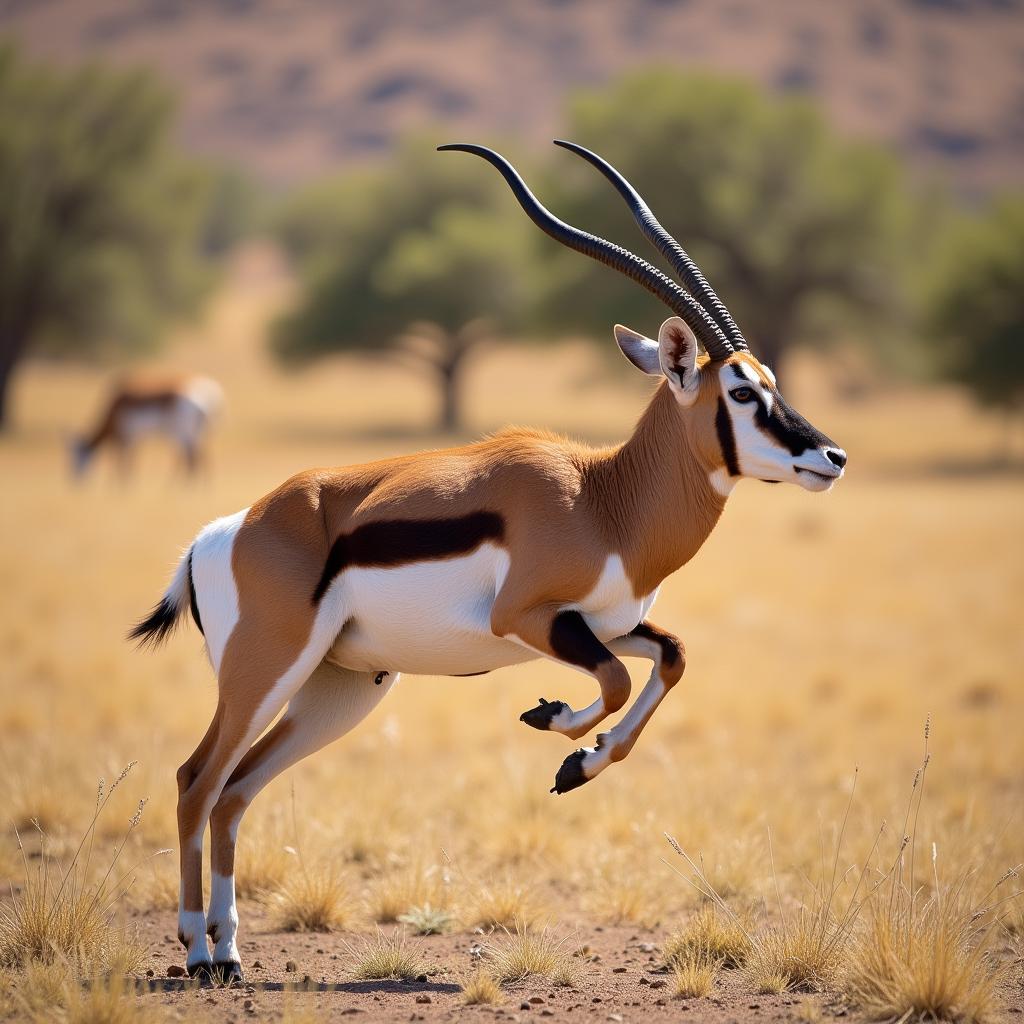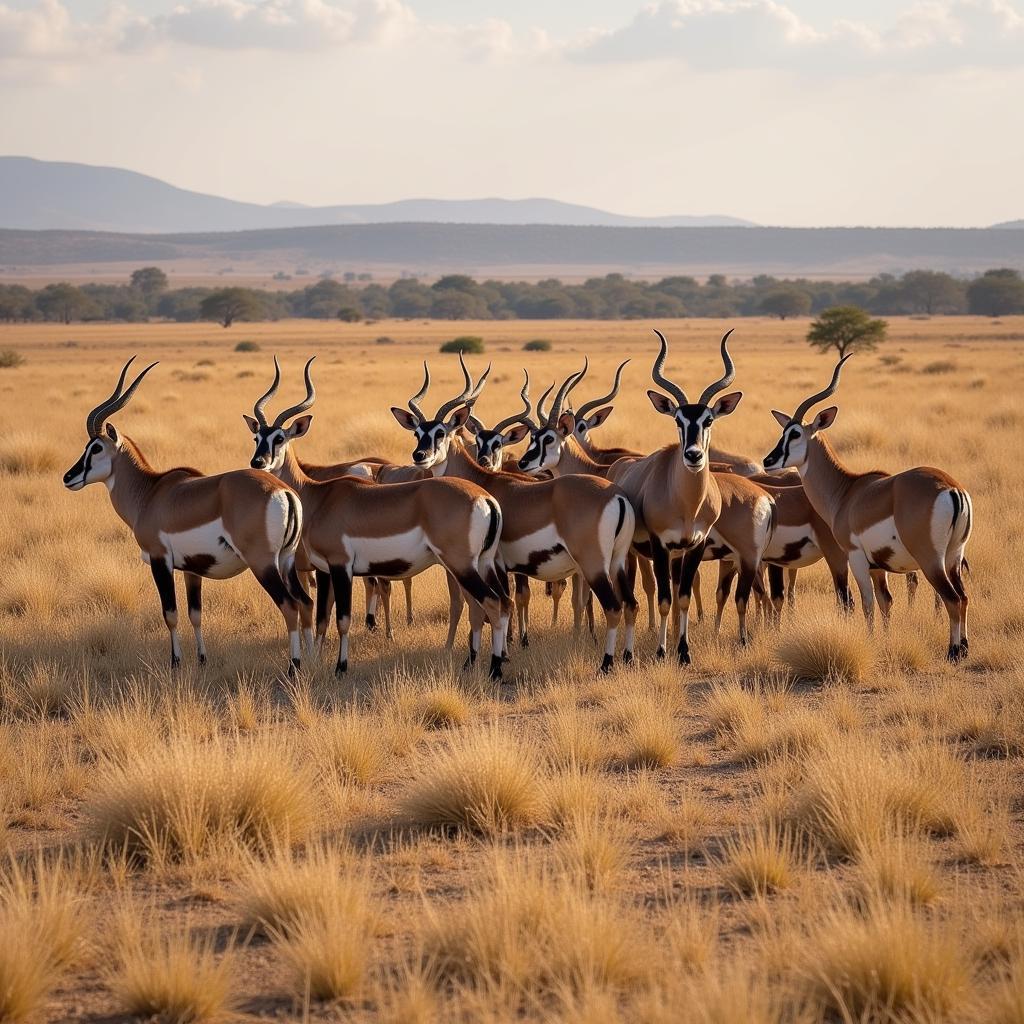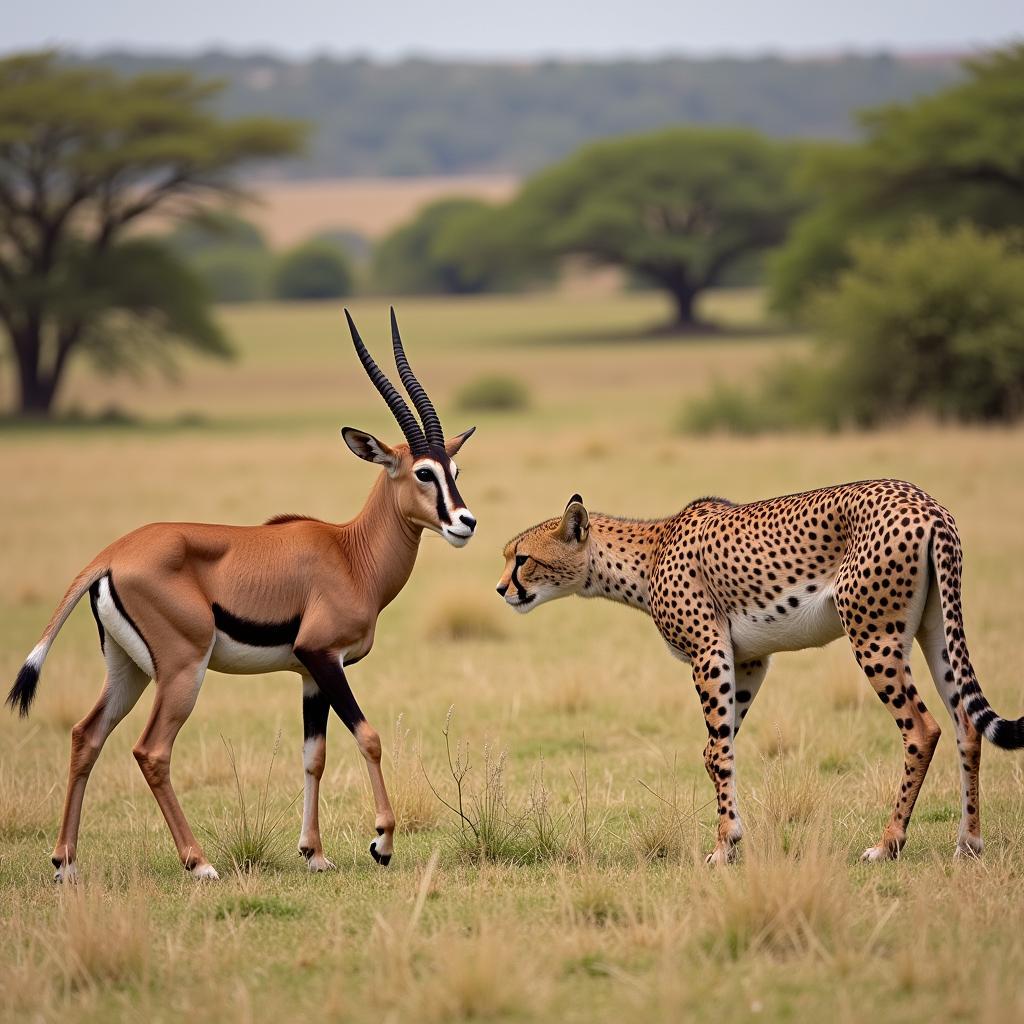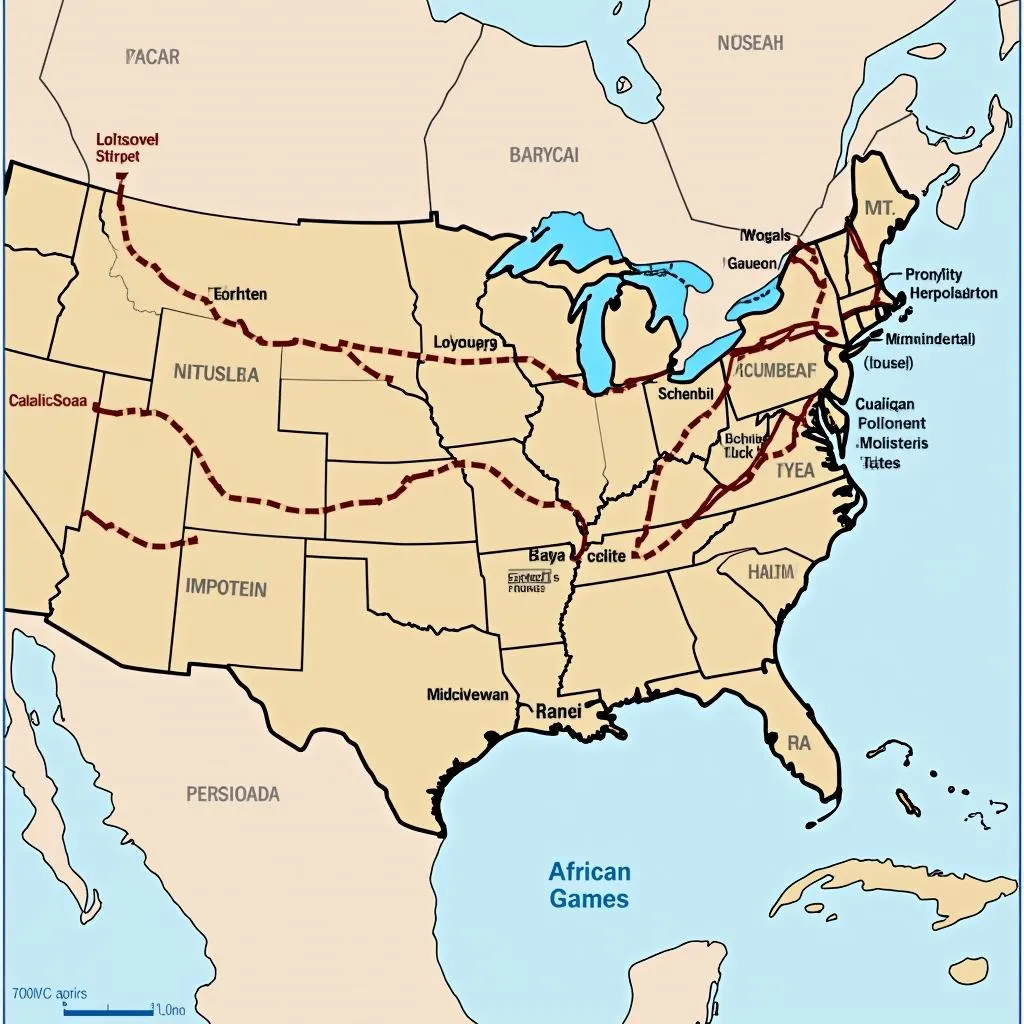The Amazing African Gazelle: Springbok
The African Gazelle Springbok is one of the most iconic antelope species of southern Africa. Known for its incredible leaping ability (called “pronking”), the springbok is a symbol of grace and resilience in the harsh African landscape. This article will delve into the fascinating world of the springbok, exploring its unique adaptations, social behavior, and role in the ecosystem.
Unveiling the Secrets of the Springbok
Springbok, scientifically known as Antidorcas marsupialis, are medium-sized antelope found primarily in the dry grasslands and savannas of southwestern Africa. Their name derives from the Afrikaans words “spring” (jump) and “bok” (antelope or goat), perfectly capturing their characteristic high leaps. These leaps, often accompanied by a distinctive arching of the back and a flash of white fur from a dorsal fold, can reach heights of up to 2 meters. These displays serve several purposes, including signaling alarm, attracting mates, and confusing predators. Want to test your knowledge of African history? Check out this African history quiz questions and answers.
What does a springbok eat? Primarily grasses and shrubs, adapting their diet based on the available vegetation. During periods of drought, they can even survive on succulent plants, obtaining moisture from the leaves. This dietary flexibility allows them to thrive in arid environments where other herbivores might struggle.
 Springbok Pronking in African Savanna
Springbok Pronking in African Savanna
The Social Life of the Springbok: Herds and Hierarchy
Springbok are highly social animals, often forming large herds that can number in the hundreds or even thousands, especially during migration. These herds offer protection from predators, as more eyes can spot danger more quickly. Within the herds, there’s a complex social structure, with dominant males controlling territories and competing for access to females. The dynamics of these herds are fascinating to observe, reflecting the intricate social interactions of these intelligent antelope. Are you curious about African independence movements? Explore African independence movements quizlet.
Springbok Predators: A Constant Threat
Like many herbivores, springbok face numerous predators, including lions, cheetahs, leopards, hyenas, and wild dogs. Their speed and agility are their primary defenses, enabling them to outrun most predators in short bursts. The pronking behavior also plays a role in predator avoidance, potentially confusing predators or signaling to them that the springbok is alert and difficult to catch.
“Springbok have developed remarkable adaptations for survival in their challenging environment, from their pronking behavior to their ability to thrive on limited resources,” notes Dr. Anika Moolman, a wildlife biologist specializing in African ungulates.
 Springbok Herd in Dry Grassland
Springbok Herd in Dry Grassland
The Springbok and its Ecosystem: A Vital Role
Springbok play an important role in the ecosystem, both as prey and as grazers. They contribute to nutrient cycling and seed dispersal, influencing the composition of the vegetation. Their presence also supports populations of predators, forming a crucial link in the food chain. Learn about different African countries puzzle.
The Conservation Status of the Springbok
Currently, springbok are classified as a species of “Least Concern” by the International Union for Conservation of Nature (IUCN). However, their populations are still susceptible to threats such as habitat loss due to agriculture and human encroachment. Continued monitoring and conservation efforts are essential to ensure the long-term survival of this iconic African gazelle.
“Understanding the intricate relationship between the springbok and its environment is crucial for effective conservation strategies,” adds Dr. Moolman. “By protecting their habitat and managing threats, we can safeguard the future of this magnificent species.” Want to know more about African countries’ capitals and currencies? Visit African countries capital and currency.
 Springbok Facing Cheetah in Savanna
Springbok Facing Cheetah in Savanna
Conclusion: The Enduring Legacy of the African Gazelle Springbok
The African gazelle springbok, with its remarkable adaptations and captivating behavior, remains an enduring symbol of the African wilderness. By understanding and appreciating its vital role in the ecosystem, we can contribute to its continued survival for generations to come.
FAQ
- What is the scientific name of the springbok? Antidorcas marsupialis
- Why do springbok pronk? To signal alarm, attract mates, and confuse predators.
- What do springbok eat? Grasses, shrubs, and succulent plants.
- What are the main predators of springbok? Lions, cheetahs, leopards, hyenas, and wild dogs.
- What is the conservation status of the springbok? Least Concern.
- Where are springbok found? Primarily in the dry grasslands and savannas of southwestern Africa.
- How high can a springbok jump? Up to 2 meters.
Need help with African American inventors? Check out this helpful resource: African American inventors definition us history quizlet.
Need more information on other African wildlife or cultural topics? Explore other articles on our website.
When you need assistance, please contact us: Phone: +255768904061, Email: [email protected], or visit us at Mbarali DC Mawindi, Kangaga, Tanzania. We have a 24/7 customer service team.
